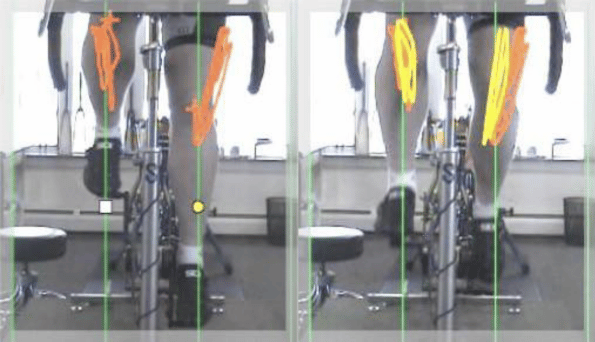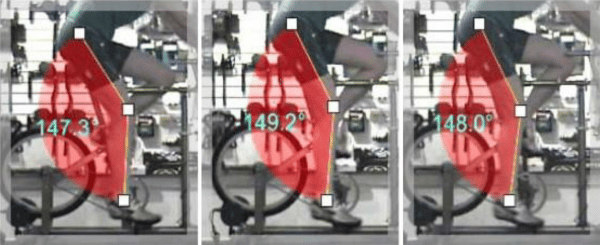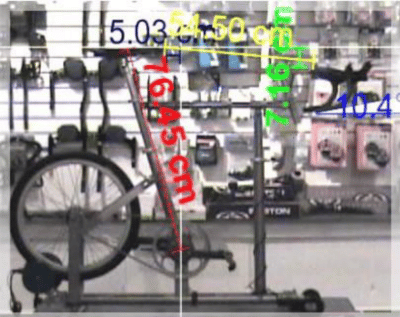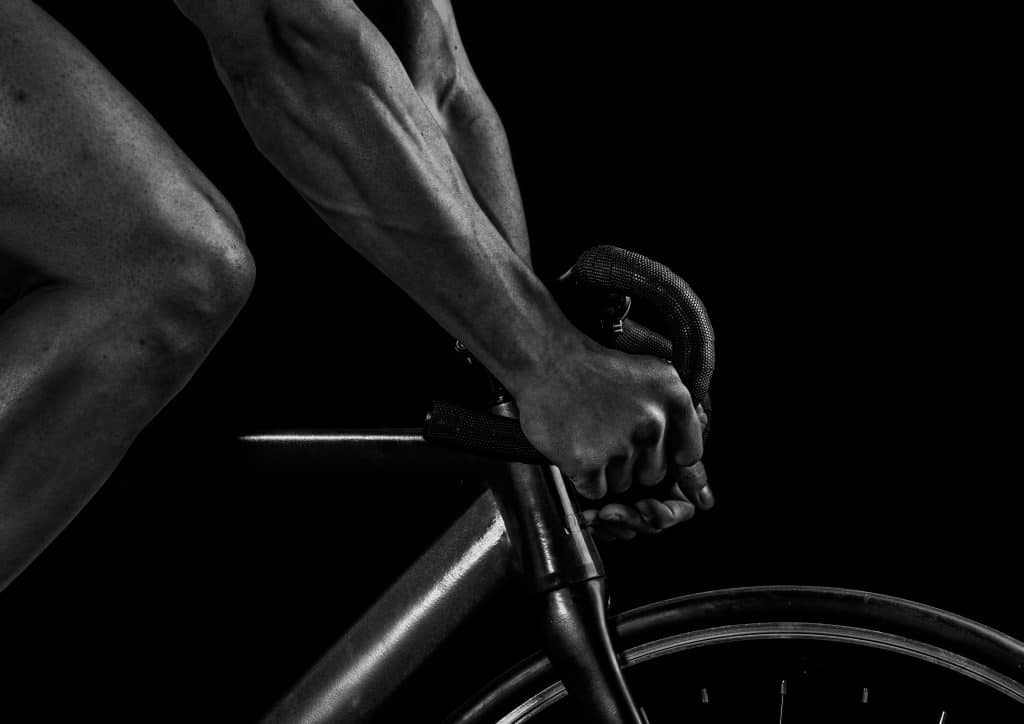Motion analysis or motion capture based bike fitting has recently become more popular. Fit Werx, road and triathlon cycling specialists, use motion analysis technology in their dynamic fittings and agree that the technology has recently come into its own. It is the most promising technology for the future of bike fitting. This being said, they also think it is important for riders to understand what these systems can and cannot do and how that relates to the end result of your fitting.
Below is a Question & Answers session with Fit Werx about motion analysis systems and also some examples of how the technology can be used to enhance a bike fit. A PDF version of this article is also available.
What is Motion capture and analysis?
In regards to cycling position, it is the act of digitally capturing a rider in motion and then using software to analyze the motions and alignment in key riding positions. Some systems record motion in 2D and others in 3D.
How do bike fitters use this information?
It depends on the fitter. Some systems depend solely on determining key “average” angles at specified key positions (bottom of the pedal stroke, for example) and setting up everyone to these averages. Some use it as an additional “bell or whistle” to increase the “Wow !” factor of their fittings. The most comprehensive fittings mix manual assessments and dynamic fit techniques with motion capture.
Are there downsides to a motion capture fit?
Bicycle riding and bike fitting is a human activity. The risk of motion capture systems (3D especially) is that it can encourage a fitter to depend on computer generated angles to determine the end position. When this happens, motion capture becomes little more than a high-tech (and expensive) version of the basic measurement and angle systems used for years by many formulaic “fit systems” and has the same reliability issues and compromises.
Can an accurate fit now be done online with motion capture?
The most comprehensive fits are still face-to-face. The ongoing dialogue between the fitter and the athlete, along with the increased accuracy of face-to-face assessment techniques, create the most reliable end results. So, while motion capture can be used to get a more reliable result online than previous methods, on-line “fittings” are still more applicable as a sizing technique than a true comprehensive fitting. The knowledge and skill of the fitter and their protocols is still key to the quality of the end result regardless.
What motion system is Fit Werx currently using and why?
We use the same system many national teams use to analyze athlete performance; it is a multi-camera based system called Dartfish. We considered both 3D and 2D systems and found that 2D systems like Dartfish offered the most comprehensive technology in regards to dynamic athlete feedback during and after the fitting. We also found that Dartfish also gave up little to the 3D systems in regards to accuracy or measurement assessing capabilities for practical use in bike fitting. Call us and we’ll be happy to discuss why this is.
In addition to accurately assessing riding position, part of a good bike fit is providing the rider with technique assessment and recommendations for optimization. Dartfish helps us do both of these simultaneously better than any other system. We also found it to be the best system in regards to customizing athlete feedback and protocol options.
How can motion analysis be used in a bike fitting?
There are a multitude of ways motion capture can be used in bike fitting. Right now, the technology is best suited to help the fitter see motion in ways the human eye cannot by slowing down the action and providing finite measurement and tracking capabilities. We frequently use body markers and then capture dynamic moments on the bike to improve the accuracy of our measurements.
Example 1: We want to see if a change in foot support has improved knee alignment. To do this, we use markers in combination with the motion analysis tool to compare the trajectory of the knee before the changes to the trajectory after.

Before : The orange lines indicate the trajectory of the knee. Note that the left knee markedly kicks out (in relation to the hip) at the top of the pedal stroke.
After : The orange lines indicate the initial trajectory before changes and the yellow lines indicate after. By super imposing before and after, we can now see that the knee tracks better with the changes. The level of improvement can be quantifiably measured within the program as well.
Example 2 : Maximum leg extension can occur in a different portion of the stroke for every rider. Motion capture can show us exactly where this point is in ways that static manual measurements are limited.

After marking the joints and dropping a segment of video into analysis, the software allows us to track the leg angle trajectory frame by frame through the stroke. When the angle is at its most obtuse, we’ve found maximum leg extension (middle frame). In this example, we can see that the saddle may be too high and that maximum extension may not be exactly where we would have expected. By combining this and other angles (like ankle angle) with information gained in our initial interview, the position can be adjusted accordingly to minimize joint load, maximize power transfer and encourage optimized pedaling technique. The result is a position that helps the rider reach their potential, while minimizing stress on the joints through greater accuracy.
Example 3 : Fit Documentation. Motion analysis allows us to provide easier to understand visual documentation of your position and technique. Our fittings include an electronic workbook that documents and discusses your riding position and technique both visually and in writing before and after your fitting. We also use motion analysis software to provide you with an easy to understand visual and written documentation of your bike position (saddle height, reach to bars, etc…) from your fit session.

Our thanks to Fit Werx for contributing to this article. A PDF version is available.

Comments are closed.